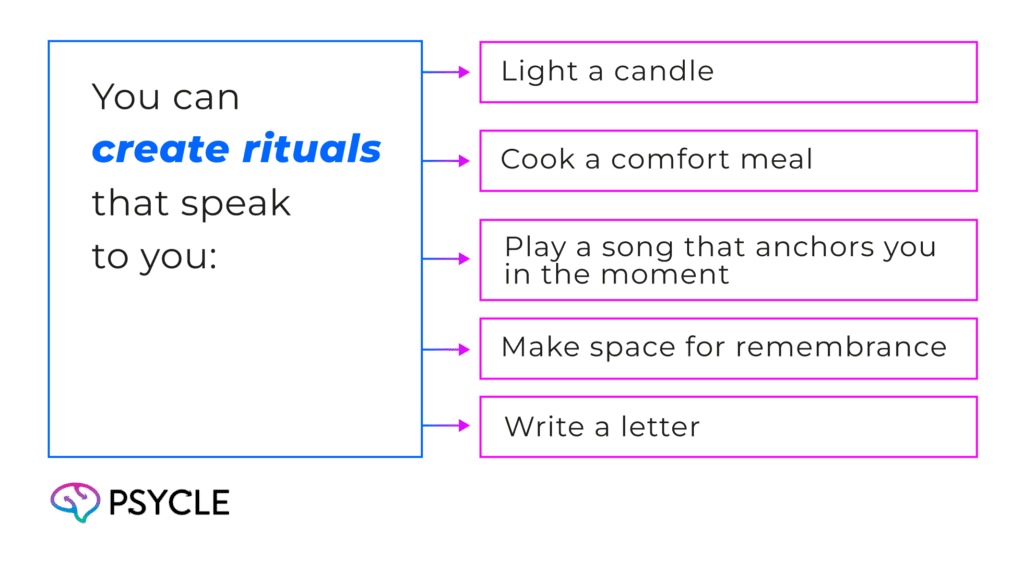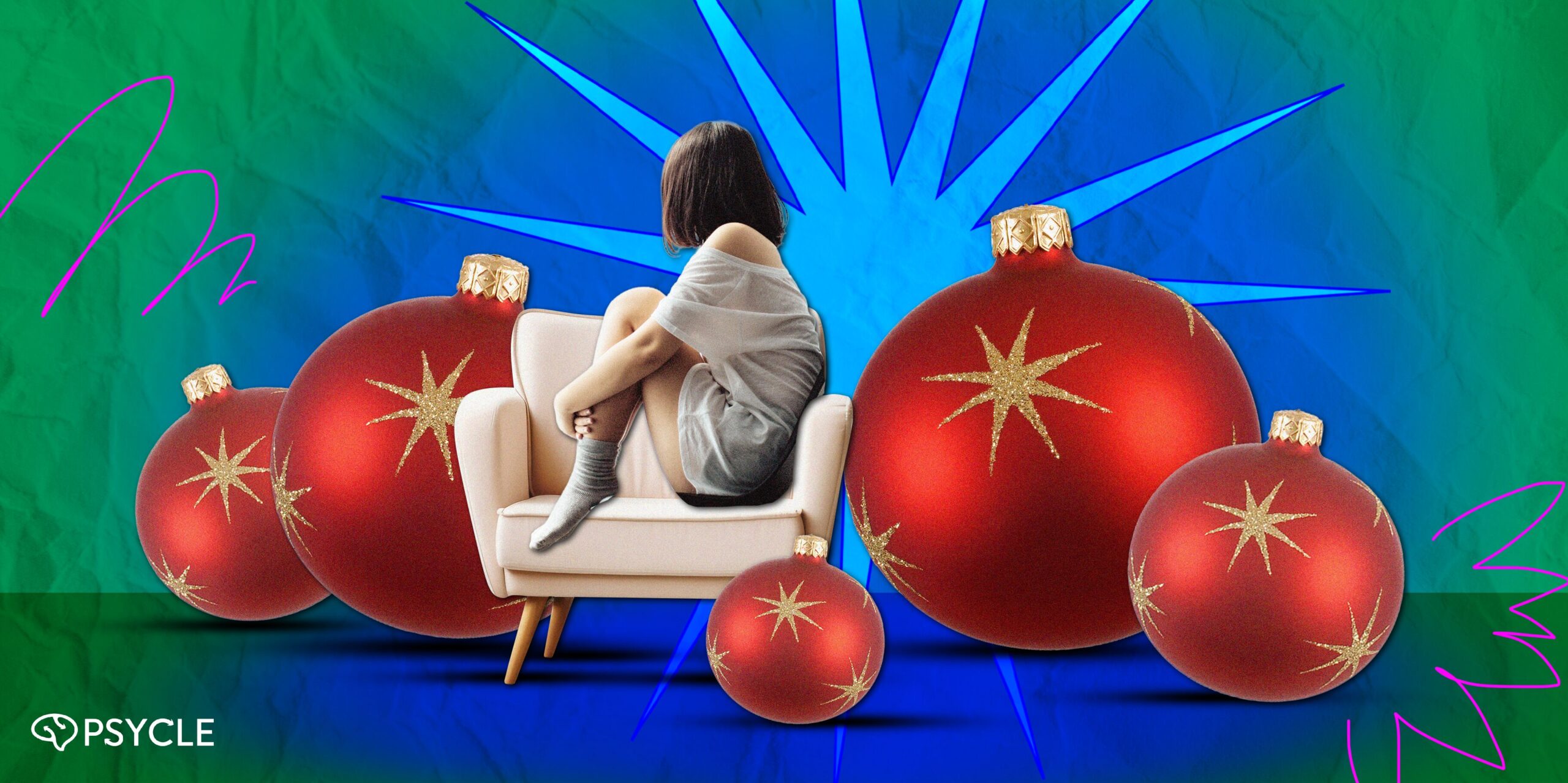The holidays are not always a time of joy, family, and connection. For many people, including adults, it can feel like those experiences are happening for others, but are somehow personally impossible. Holiday loneliness is more common than you might think, and it isn’t proof of being unloved or unlovable. It can, however, be a signal to ask yourself whether you are seeking more contact or care.
This guide is about what to do if you are experiencing holiday loneliness, with some invitations to take small, tangible actions. Recognising and addressing your feelings could be as simple as reaching out to a friend, engaging in a hobby, or volunteering for a local charity. The suggestions we explore can help with making shifts toward connection, meaning, and self-compassion.
Key Takeaways
- Loneliness during the holidays is common, not permanent.
- Connection begins with one genuine gesture.
- Personal rituals give meaning to empty days.
- Boundaries protect energy and authenticity.
- Seeking professional support is a strength, not a last resort.
Spot Your Emotional Patterns
Loneliness has its own rhythm and builds over time. For many people, it doesn’t begin instantly at the start of the holidays but builds slowly as the days go by, gathering strength through memories and expectation.
As the season goes on, you may feel holiday loneliness repeatedly in sudden flashes, like when a commercial shows a family dinner or you hear a song from childhood. Getting a sense of this pattern emerging doesn’t automatically erase your pain, but it creates more space to acknowledge where your loneliness is coming from, and to make choices about dealing with it.
Some of your feelings may overlap with seasonal affective symptoms, such as low energy, anxiety, sadness, and apathy. That’s not weakness, it’s what happens when your human biology meets your memory.
Let yourself notice it all, and don’t feel like you have to fix any of it right away. Naming what’s going on is your first step towards taking back control.
Craft a Social Strategy
Human contact is the best cure for feelings of isolation, yet it rarely arrives unprompted during the holidays. Everyone can seem busy, absorbed in their own plans. That’s why it helps to plan connections proactively. Look ahead and decide where human warmth could fit.
Reach out early, before the holiday season begins. Send a message to a friend, a relative, or even someone you haven’t spoken to in years. Others may be experiencing holiday loneliness, too.
Use technology as a bridge if you’re far away. Arrange a video dinner, stream a film together, or share a playlist. These gestures may seem small, but they can carry as much emotional weight as an in-person event. Technology can bring us closer in ways that create those warm, fuzzy feelings, even when we’re physically apart.
You can also widen your social orbit. Volunteer for a charity, join a local community event, attend a service, or participate in a workshop. Even brief interactions are reminders that feeling a connection isn’t exclusive to families or couples. You don’t need a crowd, only contact.
Design Meaningful Rituals

When traditional structures fall away, like family gatherings and shared meals, time can feel unmoored. Ritual restores rhythm. It doesn’t have to be spiritual or elaborate; it only needs to mark your days with intention.
Light a candle each morning and dedicate it to something: gratitude, memory, or simply endurance. Cook a meal that comforts you, even if you eat it alone. Play a song that anchors you in the moment. Walk at the same hour every day and treat it as an act of self-love. These are just a few examples of meaningful rituals you can create for yourself.
If you’ve lost someone, make space for remembrance. Write a letter, keep a photo visible, or tell your loved one’s story out loud. These acts turn grief into connection across time. They don’t trap you in sadness—they give your love somewhere to go.
Meaning doesn’t depend on who’s there. You can create rituals that speak to your life as it is now, not as it used to be. Each small act reclaims a sense of belonging to yourself.
Challenge Negative Narratives
Loneliness often grows from the stories we tell ourselves, rather than from what’s happening moment to moment in reality. It can easily coexist with depression, and thrives on thoughts like “No one cares about me, I’m unlovable,” or “Everyone else is happy,” and these can feel like facts, but in reality, they’re distortions.
The mind tries to make sense of pain by building explanations. Unfortunately, it usually builds cruel ones.
When those stories arise, pause and interrogate them. Ask yourself if it is really true that “no one” cares, or whether it simply feels that way right now. Consider who has last reached out to you, and when. Look back at times when you have felt loved. The goal isn’t to argue yourself into optimism, but to loosen the grip of total fatalism.
Try shifting language. Replace absolute terms like “always” and “never” with softer, more accurate ones like “sometimes” or “right now.” Saying “I feel lonely right now” instead of “I am alone” helps you remember that emotions are temporary states, not fixed identities.
Your loneliness is not a verdict. It’s an experience. And like every experience, it will pass through if you don’t trap it in a story.
Expand Your Activity Map
Stillness magnifies loneliness. The less you move, the louder your thoughts become. Activity, even gentle activity, interrupts that loop.
Look for ways to re-enter the world. Attend a community gathering, join a class, or visit a local café; all of these situations are opportunities to exchange a few words with someone. These “micro-connections” may not feel transformative, but they’re potent. A smile from a stranger can recalibrate an entire day.
Try to balance social and solo time. Find a rhythm that fits your energy. On quiet days, do something expressive like painting or dancing. Even solo recreational activities can help you shift into fresh, happier thought patterns.
Tend to Your Mind and Body
Loneliness becomes heavier when the body is not healthy. The basics, such as sleep, food, washing and movement, may seem trivial until these fundamental needs are unmet. The exhaustion and hunger that result can distort emotions, magnifying your experience of sadness. Getting out of bed in the morning and taking care of your body is not a luxury; it’s a necessity.
Keep your body steady so your emotions don’t overwhelm you. Regulating behaviors like eating consistently, drinking enough water, and making sure you move a little every day all help. You don’t need perfection, only consistency. Go outside even briefly. Natural light resets the body’s clock and softens the mind’s edges.
When your thoughts spiral, try to anchor yourself in your senses. For instance, see if you can feel the chair beneath you or count the sounds in the room and your breaths. The present moment can then start to eclipse the stories in your head.
Set Boundaries With Expectations
The world sells an idealized holiday, but in reality, no one actually has perfect decorations, perfect relationships, and a picture-perfect form of joy. The truth is, most people’s holidays are a total mix of comfort, chaos, love, and disappointment.
Permit yourself to step away from anything carrying daunting expectations. You don’t have to attend every gathering, answer every message, or explain your solitude to anyone.
If social media amplifies your engagement with loneliness-inducing comparisons, consider muting it. The boundaries you create allow you the emotional space for more authenticity.
Seek Help When Overwhelmed
Sometimes loneliness deepens into something heavier, like despair, numbness, or thoughts of not wanting to exist. These feelings are signals, not verdicts. When you reach that point, don’t wait. Reach outward.
Talk to someone: a friend, a therapist, or a helpline. Seeking help is not a sign of brokenness; it means you’re alive enough to want relief still. You deserve support even if your life “looks fine.” Loneliness doesn’t need justification to be valid. Connection is medicine, and sometimes the first dose is simply saying, “I can’t do this alone right now.”
Track Progress and Adjust Your Activities
Healing loneliness is not linear. Some days you’ll feel fine; others, hollow. That fluctuation doesn’t mean you’re failing; it means you’re healing.
Set small goals, like sending one message, attending one gathering, or taking one mindful walk. You can constantly adjust the plan as your mood shifts. Flexibility is the secret to sustaining your holiday self-care success. Staying in motion helps loosen loneliness’s grip.
FAQs
What if I Don’t Feel Like Reaching Out At All?
Start where you are. If conversation feels impossible, send a simple message—an emoji, a photo, a short “thinking of you.” If that’s too much, consider connecting indirectly by posting online, commenting in a group, or volunteering remotely. Even a passive connection is a bridge back to others.
When Should I Seek Professional Help?
If loneliness merges with persistent despair, sleeplessness, hopelessness, or thoughts of self-harm, seek help immediately. Therapists, doctors, and crisis lines exist for precisely this reason. You don’t need to earn the right to care.
Sources
- https://bmcpublichealth.biomedcentral.com/articles/10.1186/s12889-025-21463-7
- https://pubmed.ncbi.nlm.nih.gov/34175713/
- https://www.valuepenguin.com/holiday-loneliness-survey
- https://www.phoenix.edu/press-release/tis-the-season-to-be-jolly-national-survey-finds-nearly-half-of-americans-experience-seasonal-mental-health-issues.html
- https://newsnetwork.mayoclinic.org/discussion/loneliness-and-social-isolation-through-the-holidays/
- https://www.publicnewsservice.org/2023-12-26/health/loneliness-isolation-on-the-rise-around-the-holidays/a87931-1#:~:text=As%20festive%20as%20the%20holidays,%2C%20seasonal%20depression%2C%20and%20grief.
- https://www.crisistextline.org/blog/2023/12/06/how-to-set-healthy-boundaries-for-the-holidays/
- https://www.sciencedirect.com/science/article/pii/S2666560323000361
- https://mariandrew.substack.com/p/how-to-talk-to-people

